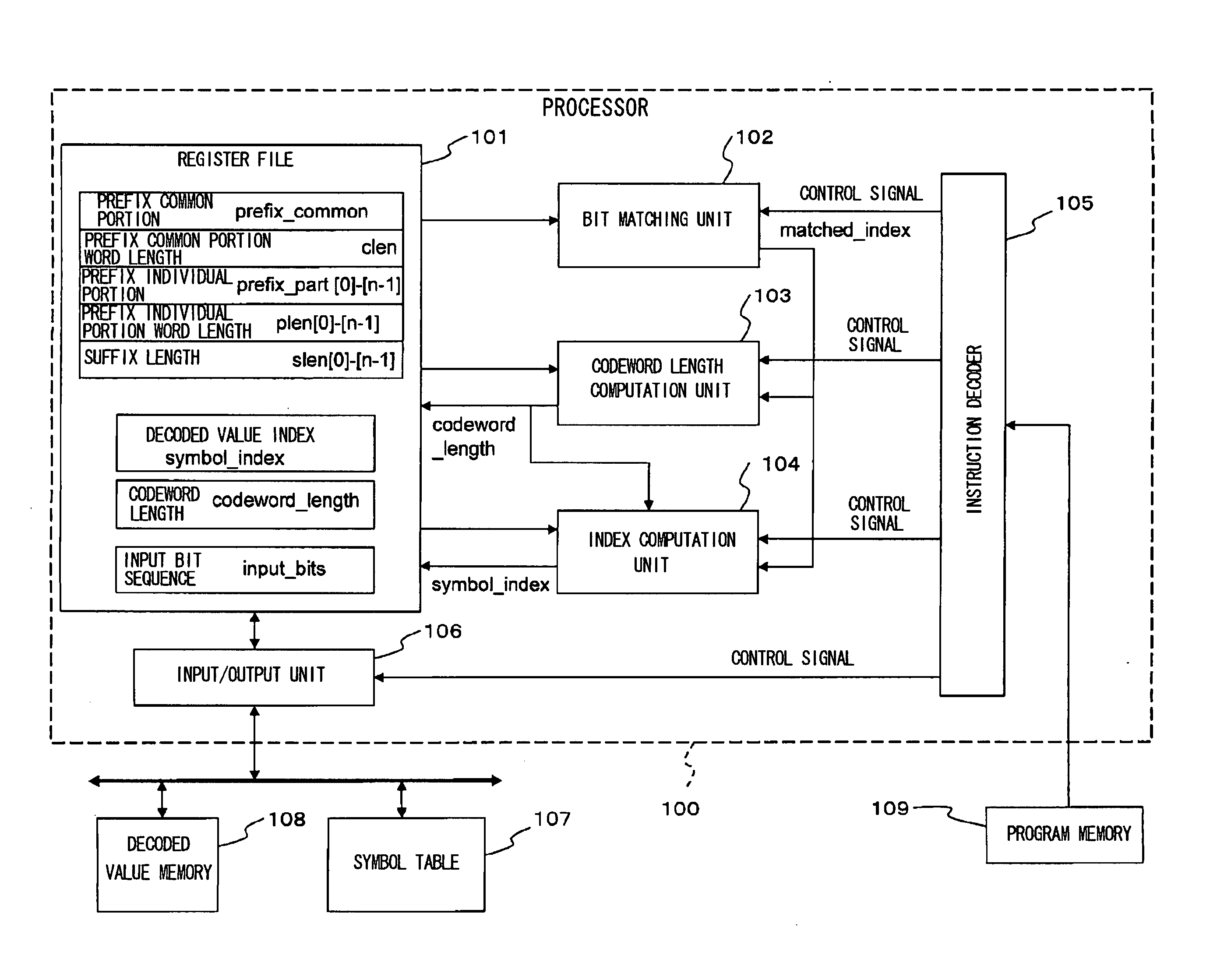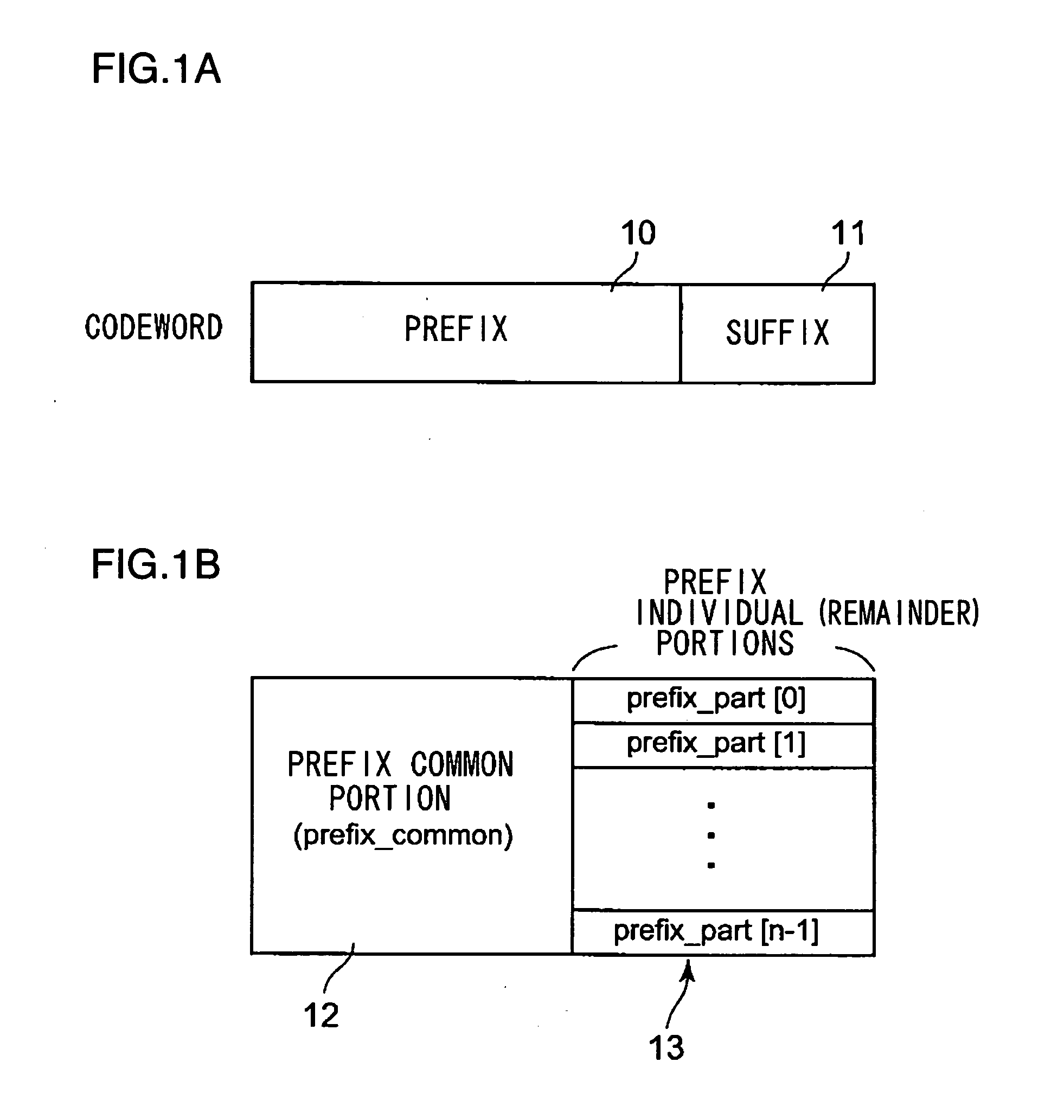Variable-Length Code Decoding Device and Variable-Length Code Decoding Method
a decoding device and variable-length code technology, applied in the field of compression encoded signal decoding technique, can solve the problems of low throughput (one bit per cycle) in this method, large table size, and inability to decode codewords using m bits, so as to achieve high speed and reduce the size of the storage region where prefixes are stored
- Summary
- Abstract
- Description
- Claims
- Application Information
AI Technical Summary
Benefits of technology
Problems solved by technology
Method used
Image
Examples
application example
6. Application Example / Variant Example
[0172]The elements of the processor 100 shown in FIG. 1 may be variously applied in a range without departing from the content already explained. A specific application example or a variation example will be described below.
[0173]6.1) In the exemplary embodiment described above, the eight prefixes were exemplified. Generally, the number of prefixes corresponding to codewords is larger than eight. When codewords having the eight prefixes or more are decoded, a method where the prefixes are classified for every eight prefixes and matched with an unknown codeword may be used. When the number of the prefixes is 23 in step S203 in FIG. 6, for example, the prefixes are classified into eight, eight, and seven prefixes, and the matching is performed. That is, by executing the above-mentioned bit matching instruction three times, the 23 prefixes can be matched with the unknown codeword. By exercising such control, similar processing can be performed even...
PUM
 Login to View More
Login to View More Abstract
Description
Claims
Application Information
 Login to View More
Login to View More - R&D
- Intellectual Property
- Life Sciences
- Materials
- Tech Scout
- Unparalleled Data Quality
- Higher Quality Content
- 60% Fewer Hallucinations
Browse by: Latest US Patents, China's latest patents, Technical Efficacy Thesaurus, Application Domain, Technology Topic, Popular Technical Reports.
© 2025 PatSnap. All rights reserved.Legal|Privacy policy|Modern Slavery Act Transparency Statement|Sitemap|About US| Contact US: help@patsnap.com



